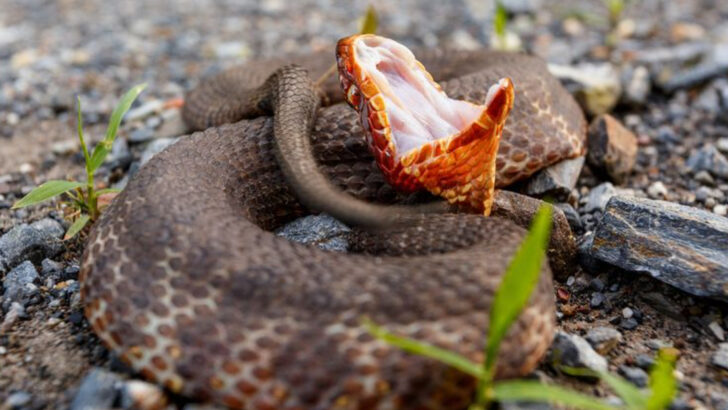Misjudged. Feared. Flat-out legendary.
The cottonmouth snake—aka the water moccasin—is one of the most misunderstood creatures slithering through the swamps and slow-moving waters of the American South.
People scream “venomous!” and run. And yes, it can be dangerous. But there’s a lot more going on beneath that gaping white mouth than most folks realize.
This isn’t your average snake. We’re talking about a cold-blooded survivor with weird quirks, bold behaviors, and a look that says “Don’t mess with me”—and means it.
Ready to meet the real cottonmouth? Forget the tall tales. This reptile has secrets. And they’re wilder than fiction.
Unique Venom Composition
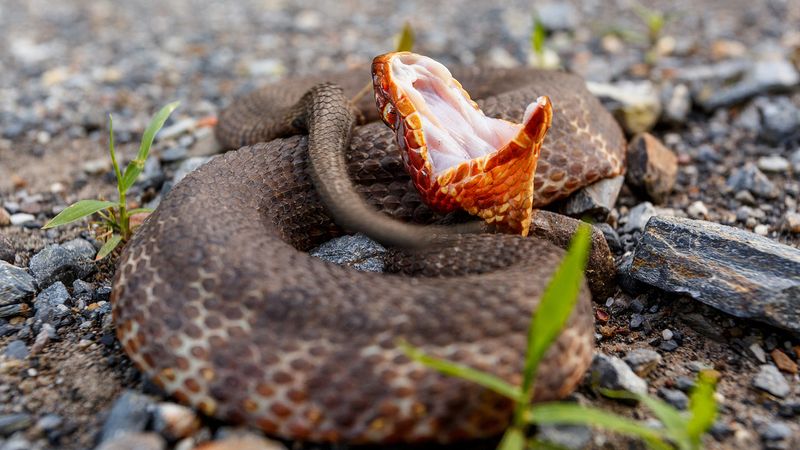
The cottonmouth snake has a venom that’s both unique and potent. Its venom contains proteins and enzymes that begin digestion even before the prey is swallowed.
Interestingly, this venom is less toxic to humans compared to other pit vipers, making cottonmouth bites rarely fatal. The cottonmouth’s venom is particularly adapted to subdue fish and amphibians, its primary diet in swampy habitats. This specialized venom composition demonstrates the snake’s evolutionary adaptation to its environment.
Unlike rattlesnakes, cottonmouths are less likely to strike unless provoked, showcasing a fascinating balance between aggression and self-defense.
Heat-Sensing Pits

Equipped with heat-sensing pits, cottonmouths can detect the slightest temperature changes. These specialized organs allow them to hunt effectively in complete darkness.
Located between the eyes and nostrils, these pits function like infrared detectors, providing the cottonmouth with a sixth sense. This adaptation is particularly useful in their swampy environments, where visibility is often limited.
The ability to sense heat gives the cottonmouth an edge over its prey, enabling it to strike with precision. This remarkable sensory tool highlights the complexity of this often-misunderstood reptile.
Camouflage and Coloration
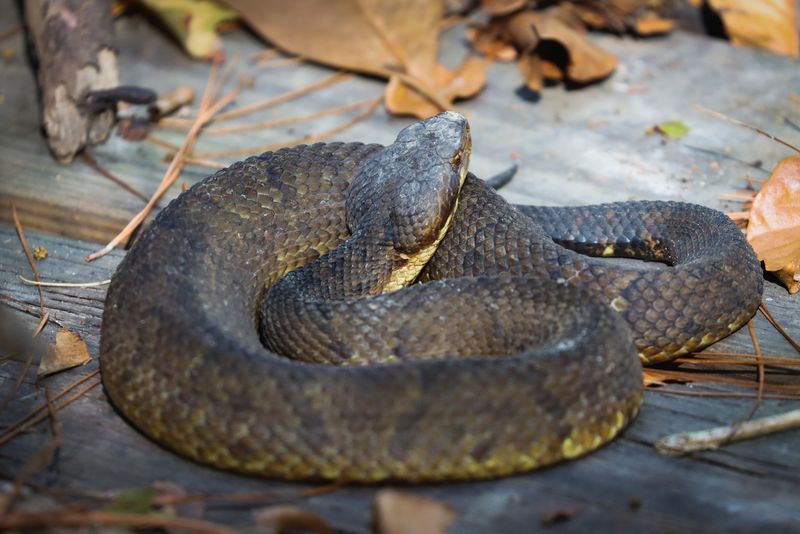
The cottonmouth’s coloration serves as an excellent camouflage, helping it blend into its murky surroundings. Its dark, olive-brown skin, coupled with a lighter belly, allows it to remain hidden from both prey and predators.
Juvenile cottonmouths sport a brighter coloration with a distinctive yellow tail, which they use to lure prey. As they mature, these snakes darken, enhancing their stealth. This effective camouflage is a crucial survival tool, reflecting the cottonmouth’s adaptation to its habitat.
The subtle beauty of their coloration often goes unnoticed, overshadowed by their fearsome reputation.
Swimming Abilities
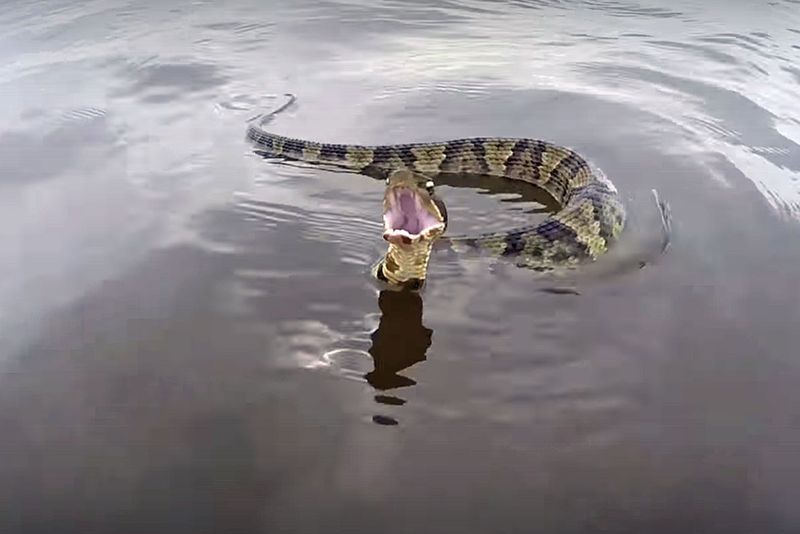
Cottonmouths are exceptional swimmers, often seen gliding through water with ease. Unlike many snakes, they swim with their heads above water, making them easily recognizable.
Their ability to navigate both land and water environments makes them versatile predators. They often use water bodies as escape routes or hunting grounds, showcasing their adaptability. In swamps and marshes, where they thrive, swimming is essential for survival.
This dual-terrain proficiency is one of the many reasons cottonmouths are such effective hunters. Watching a cottonmouth snake swim is witnessing an animal perfectly adapted to its niche.
Defensive Display
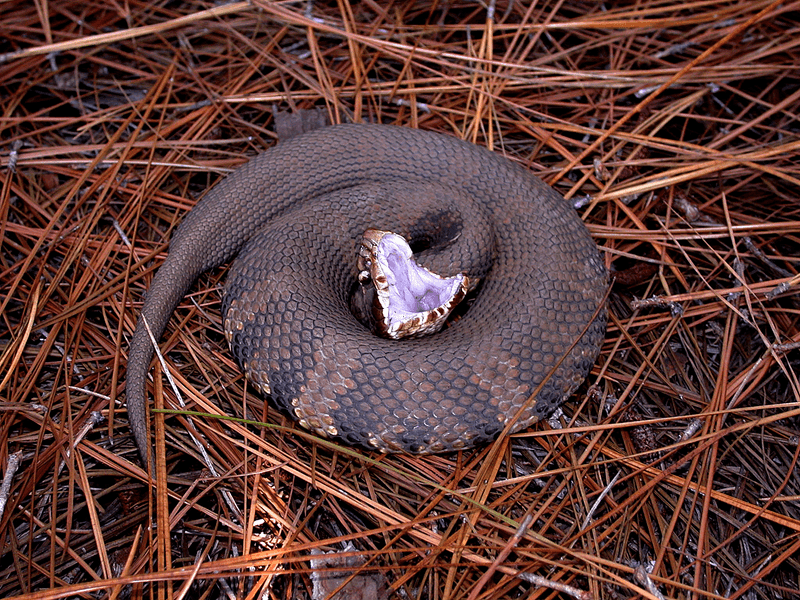
When threatened, the cottonmouth puts on an impressive defensive display. It opens its mouth wide, revealing the pale, white interior that gives it the name ‘cottonmouth.’
This gesture is a warning sign, meant to deter potential threats. The dramatic display is often accompanied by a loud hiss, making the snake seem more intimidating. Contrary to its aggressive display, the cottonmouth rarely strikes unless provoked.
This behavior reflects a complex balance between defense and deterrence, showcasing the snake’s strategic approach to survival. Understanding these displays can reduce unnecessary fear and hostility towards these snakes.
Dietary Preferences
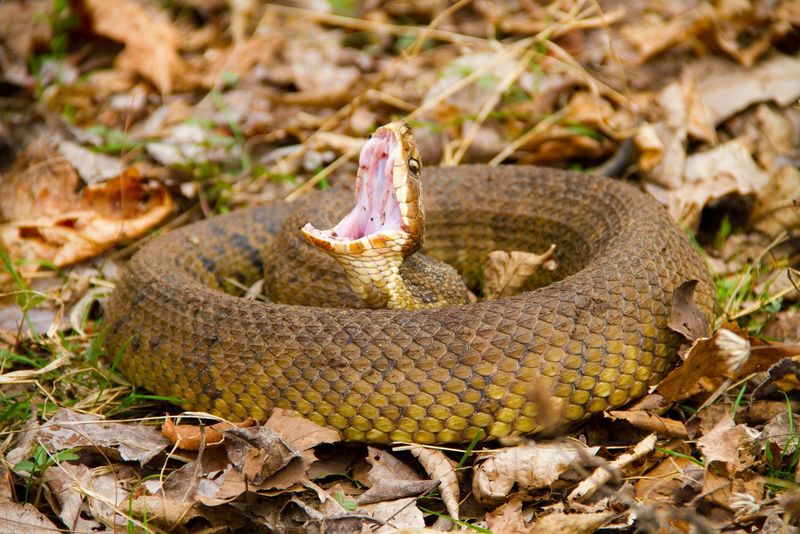
Cottonmouths have a varied diet, with a strong preference for aquatic prey. Fish and amphibians constitute their primary food sources, but they also consume small mammals, birds, and other reptiles.
Their opportunistic feeding habits are a testament to their adaptability. They exhibit remarkable patience, often lying in wait for unsuspecting prey. This dietary flexibility allows them to thrive in diverse environments.
Despite their fearsome reputation, cottonmouths play a crucial role in controlling pest populations. By understanding their dietary needs, we gain insight into their ecological importance and the delicate balance of their ecosystems.
Reproductive Behavior
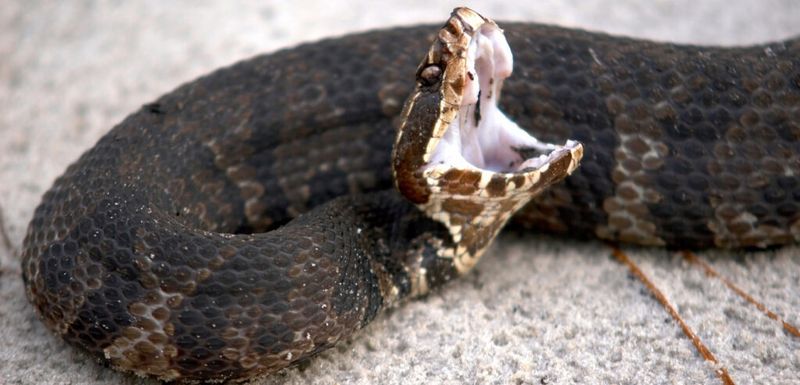
The reproductive behavior of cottonmouths is as intriguing as their lifestyles. These snakes are viviparous, giving birth to live young rather than laying eggs.
Mating occurs in spring, with females giving birth in late summer. Litters can range from one to twenty young, depending on environmental conditions and food availability. The young are independent from birth, equipped with venom and ready to hunt.
This reproductive strategy allows cottonmouths to adapt to their often unpredictable environments. The cycle of life continues in the swamps, with new generations of cottonmouths perpetuating the legacy of this remarkable species.
Behavioral Myths

Misunderstandings about cottonmouth behavior abound. Often labeled as aggressive, these snakes actually prefer to avoid confrontation.
Their infamous ‘chasing’ behavior is a myth; they typically retreat when threatened. The perception of aggression often stems from their defensive displays, which are misinterpreted as hostility. In reality, cottonmouths are more likely to flee than fight.
By dispelling these myths, we can foster a more accurate understanding of these snakes. While caution is advised, understanding the true nature of cottonmouths promotes coexistence. Recognizing their role in the ecosystem can lead to greater appreciation of their presence.
Habitat and Range
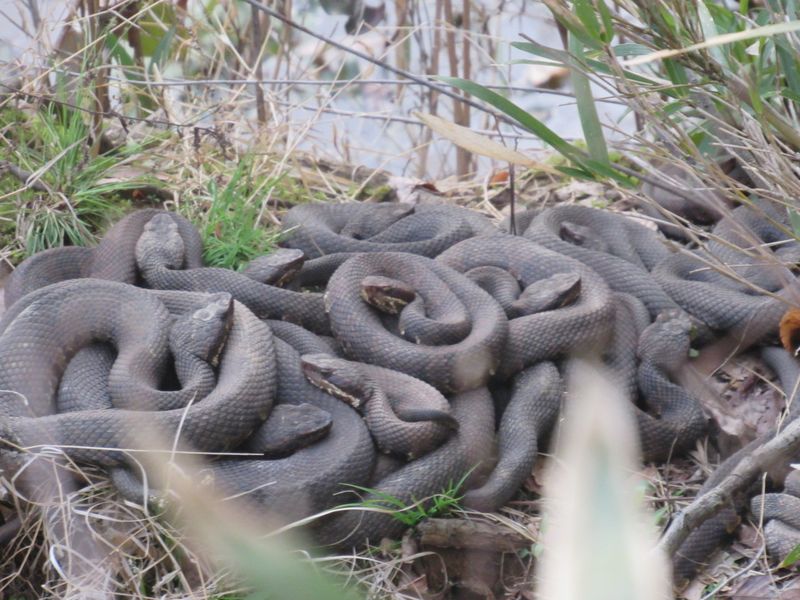
Cottonmouths inhabit a variety of wetland environments, including swamps, marshes, and slow-moving streams. Primarily found in the southeastern United States, their range extends from Virginia to Florida, and west to Texas and Oklahoma.
These snakes are highly adaptable, capable of thriving in both natural and human-altered landscapes. Their presence in diverse habitats underscores their resilience and ecological importance. Understanding their habitat needs helps in conservation efforts and minimizes human-snake conflicts.
As wetlands face increasing threats, the survival of cottonmouths serves as an indicator of ecosystem health and biodiversity.
Temperature Regulation
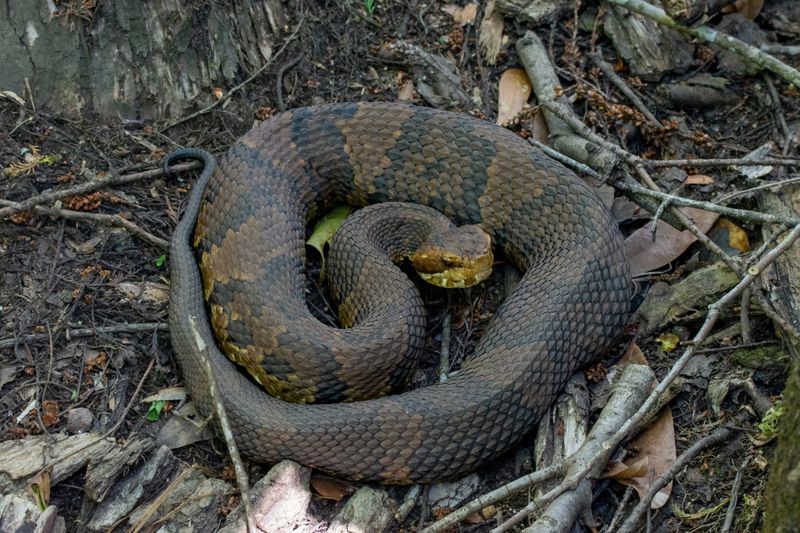
Like all reptiles, cottonmouths are ectothermic, relying on external heat sources to regulate their body temperature. Basking in the sun, they absorb heat to become active and efficient hunters.
During cooler periods, they retreat to burrows or dense vegetation to conserve warmth. This behavior is crucial for maintaining physiological functions, including digestion and metabolism. By understanding this aspect of their biology, we can appreciate the delicate balance cottonmouths maintain in their environments.
Temperature regulation plays a vital role in their daily activities and overall survival, highlighting the intricate relationship between reptiles and their habitats.
Lifespan and Longevity
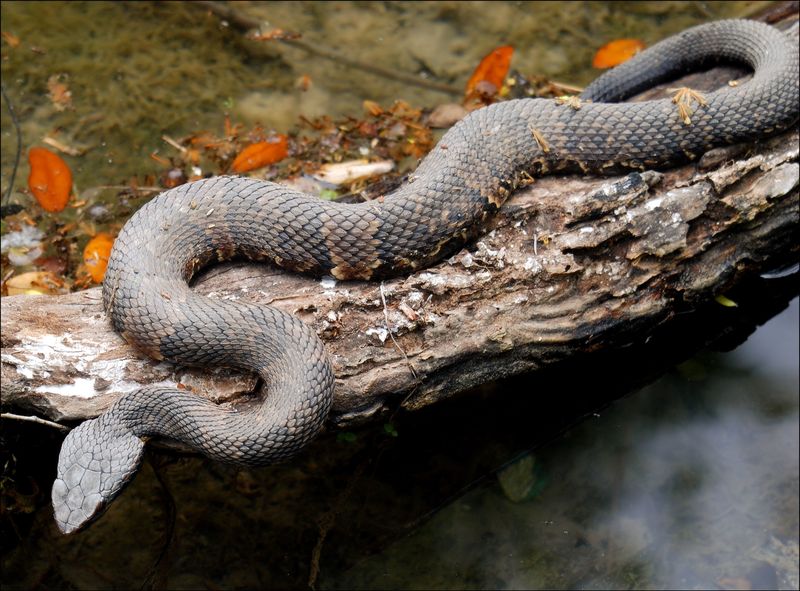
Cottonmouth snakes can live up to 10 years in the wild, with some individuals reaching even greater ages in captivity. Their longevity is influenced by various factors, including predation, habitat quality, and food availability.
In their natural environments, cottonmouths face numerous challenges, from human encroachment to competition for resources. Despite these pressures, their ability to adapt contributes to their survival. Understanding their lifespan highlights the resilience of these snakes.
Protecting their habitats ensures future generations of cottonmouths continue to thrive. Their presence is a testament to the enduring complexity of nature.
Conservation Status
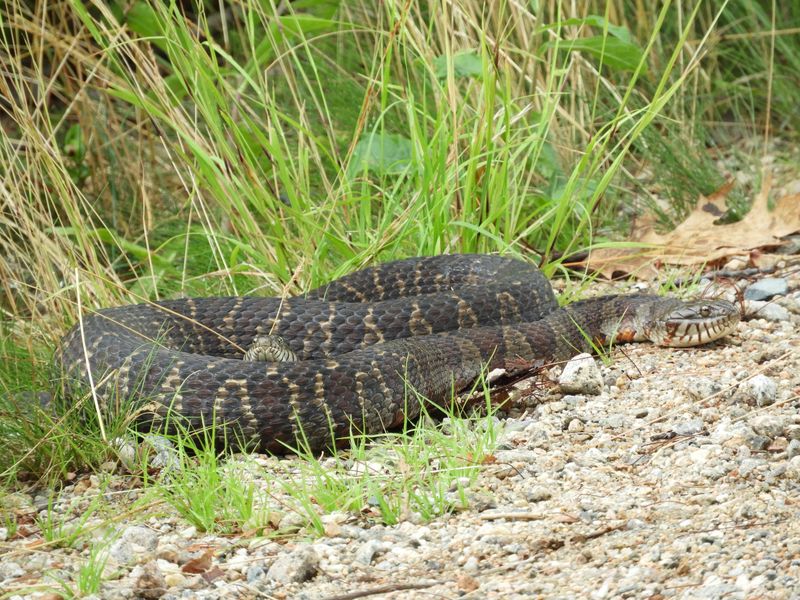
Despite their fearsome reputation, cottonmouths are not currently endangered. However, habitat loss and environmental changes pose significant threats to their populations.
Conservation efforts focus on preserving wetland habitats and promoting coexistence with human communities. Educating the public about the ecological role of cottonmouths helps reduce unnecessary killings and promotes awareness of their importance.
Protecting these snakes is vital for maintaining healthy ecosystems, as they control prey populations and contribute to biodiversity. While not at immediate risk, ongoing conservation is essential to safeguard their future and the delicate balance of their environments.

